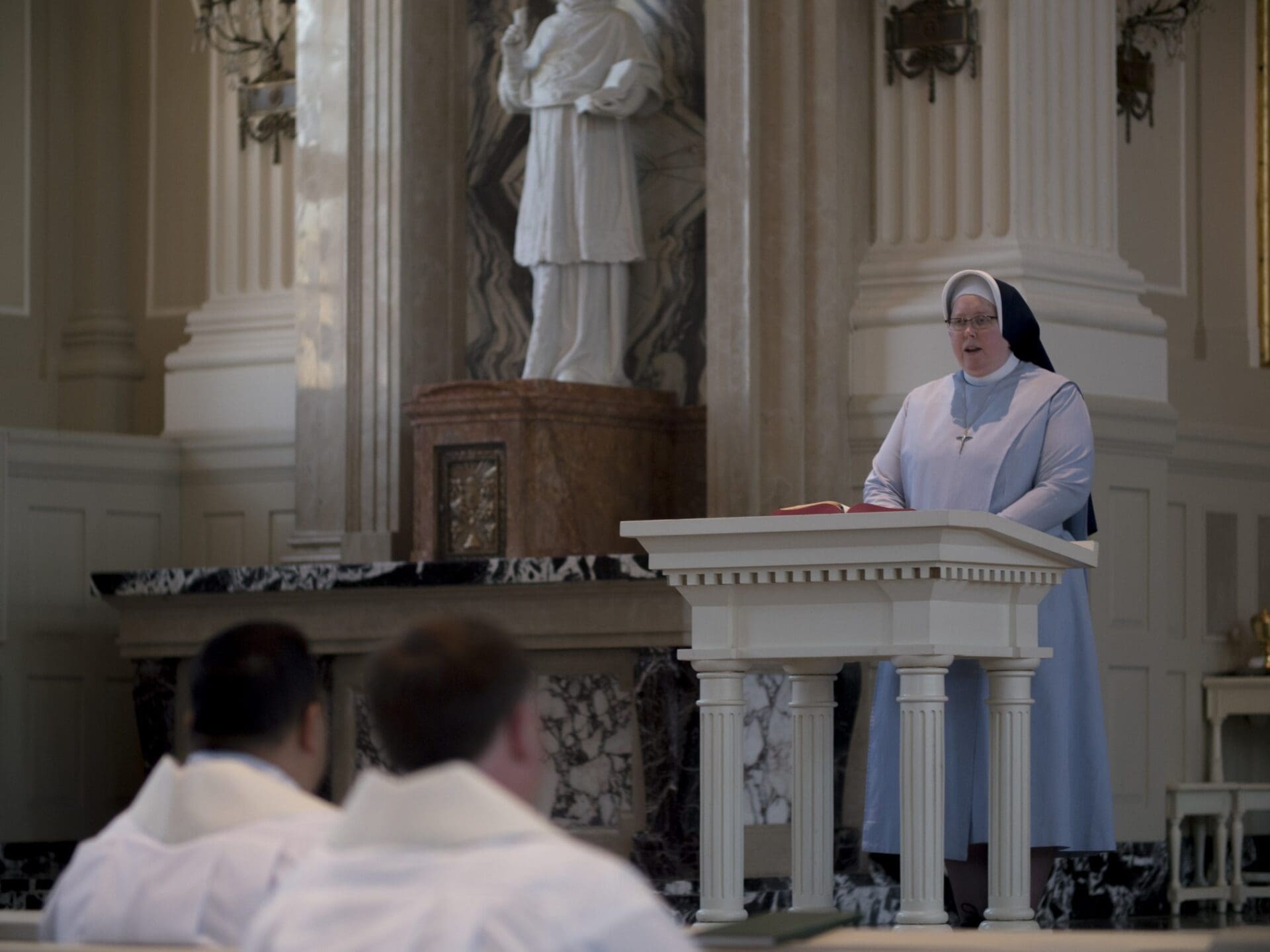The current Order for Mass leaves many gestures and movements unspecified; therefore, the practice of the last 50 years has been to improvise a manner of celebrating Mass which fills in the holes left to the imagination by the General Instruction on the Roman Missal (GIRM). At times and in certain places, these holes have led celebrants to adopt uncritically any number of practices from the Churches of the East. At other times, some mistaken or misunderstood recollection about how Mass was celebrated prior to the Second Vatican Council has provided the basis for acting today. Finally, in the end, some arbitrary choice, invented on the spot or borrowed from here or there without much thought, becomes a localized custom which, in time, is eventually treated as an unchanging and unquestioned norm.
This haphazard approach to the art of celebrating the liturgy has led to the fragmentation of the liturgy, so that the Mass as celebrated in this parish is quite different, if not radically so, from the Mass celebrated in that parish. Such a state of affairs cannot be good for the unity of the Church. Therefore, some reference to a common norm for behaving during the celebration of Mass can be a source and stimulant for greater unity. The traditional practice of the Roman liturgy (integrated with such provisions that the GIRM does provide) can be a valuable source for such a norm. In this post, we will begin to examine how the Liturgy of the Word of the Novus Ordo might be conducted according to traditional practice.
Prior to the beginning of Mass, The Lectionary for Mass has been placed on the ambo open to the proper page. After the opening collect of Mass, all in the sanctuary and in the nave are seated to begin hearing the Scripture readings to be proclaimed. The priest, deacon, servers, and other ministers in the sanctuary are expected to sit with both feet flat on the floor, with both hands resting open and flat on their knees or their lap (See Ceremonial for Bishops, no. 109). They should be looking at the reader in a manner that communicates they are paying attention. After all, if those in the sanctuary do not appear to be paying attention, why should anyone else in the church?
If the reader is not seated in the sanctuary, he or she makes a profound bow to the altar before approaching the ambo. However, if the reader is already seated in the sanctuary itself and must pass in front of the altar in order to approach the ambo, he or she also makes a profound bow to the altar. In addition, either immediately after making this reverence to the altar, or upon arriving at the ambo, the reader may make a bow of the head toward the celebrant, and then turn to the ambo to begin the reading (See A. Mutel and P. Freeman, Cérémonial de la Sainte Messe, Artège, 2012, pp. 41-42, 95; Peter Elliot, Ceremonies of the Modern Roman Rite, Ignatius Press, p. 96).
Readers thus follow the traditional actions of the servers. Like the servers, who acknowledge the celebrant with a bow of the head before and after approaching him to render some service, the reader at Mass does likewise. The bow indicates the reader’s recognition that all ministries during Mass take place under the presidency of the priest celebrant. It is a gracious gesture to acknowledge the one who is moderating the exercise of various ministries into one harmonious act of worship.
While the GIRM gives no directions as to where to place one’s hands when reading the Scripture passages prior to the Gospel, the traditional custom is to place both hands on the edges of the lectionary while reading (A. Mutel and P. Freeman, Cérémonial, p. 96). Traditionally, when a minister read the readings prior to the Gospel, he held the book in both hands to do so. In cases when the book rested on a stand, as when a priest read the same readings at the altar, he placed his hands on the edges of the book, as if he were still holding it in his hands to proclaim the reading.
After concluding the reading, tradition again can help guide the reader’s actions: a reverent gesture once again first to the celebrant, and then to the altar upon leaving the sanctuary. This process is repeated if the psalmist leads the psalm from the ambo, and if there is a second reader. In addition, if any of these ministers approach the sanctuary from the nave, they may be accompanied by a master of ceremonies or a server who walks with them at their left and stands near the ambo during the reading or the psalm. After the second reading, a master of ceremony or the second reader removes the Lectionary from the ambo and places it on a nearby credence table (or other suitable place) if the Gospel passage to follow will be read from the Gospel book rather than from the Lectionary. The proclamation of the Gospel is the high point of the Liturgy of the Word.
In the next post, we will examine how all the gestures surrounding the proclamation of the Gospel appointed for Mass can serve to testify to this conviction.



